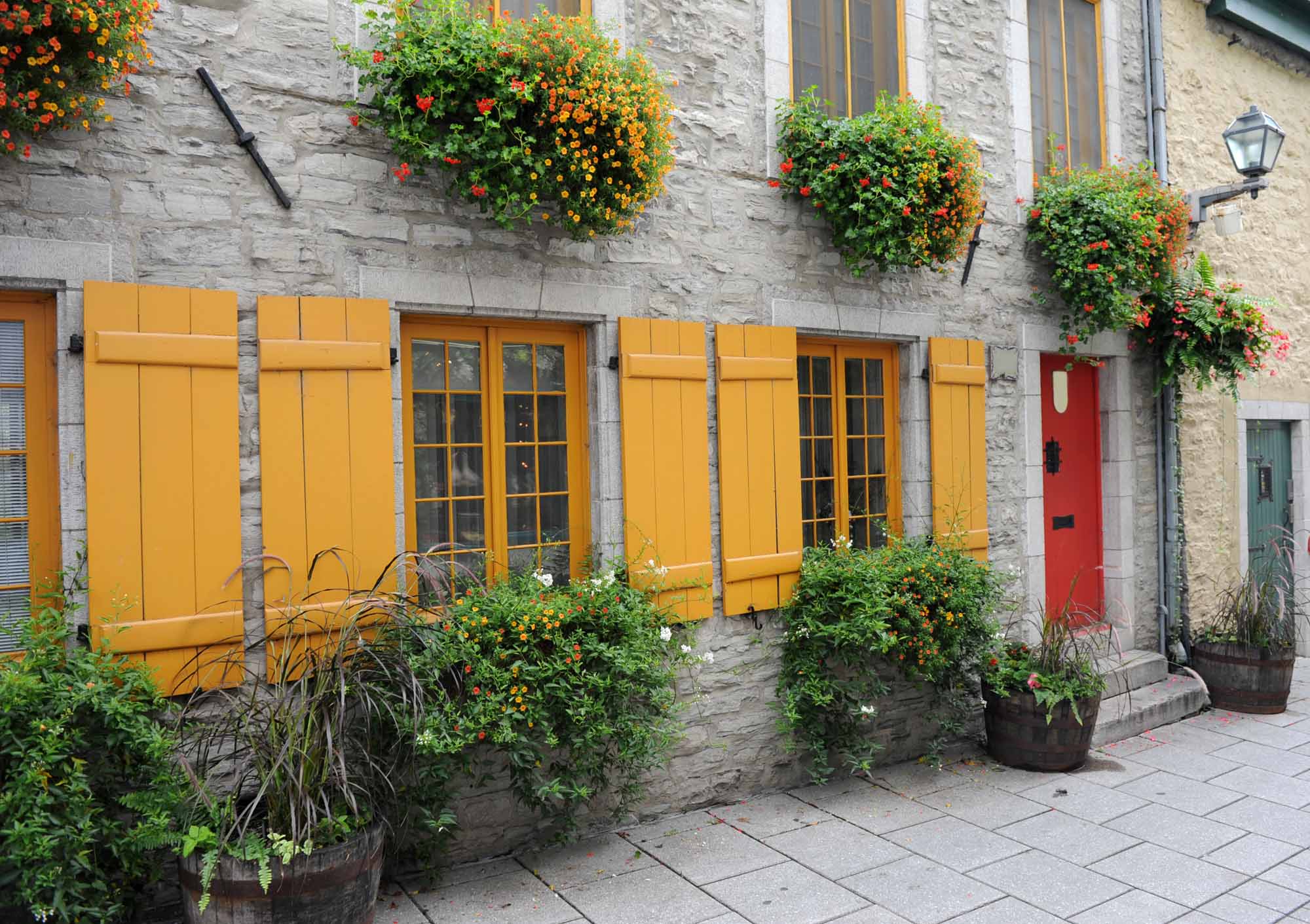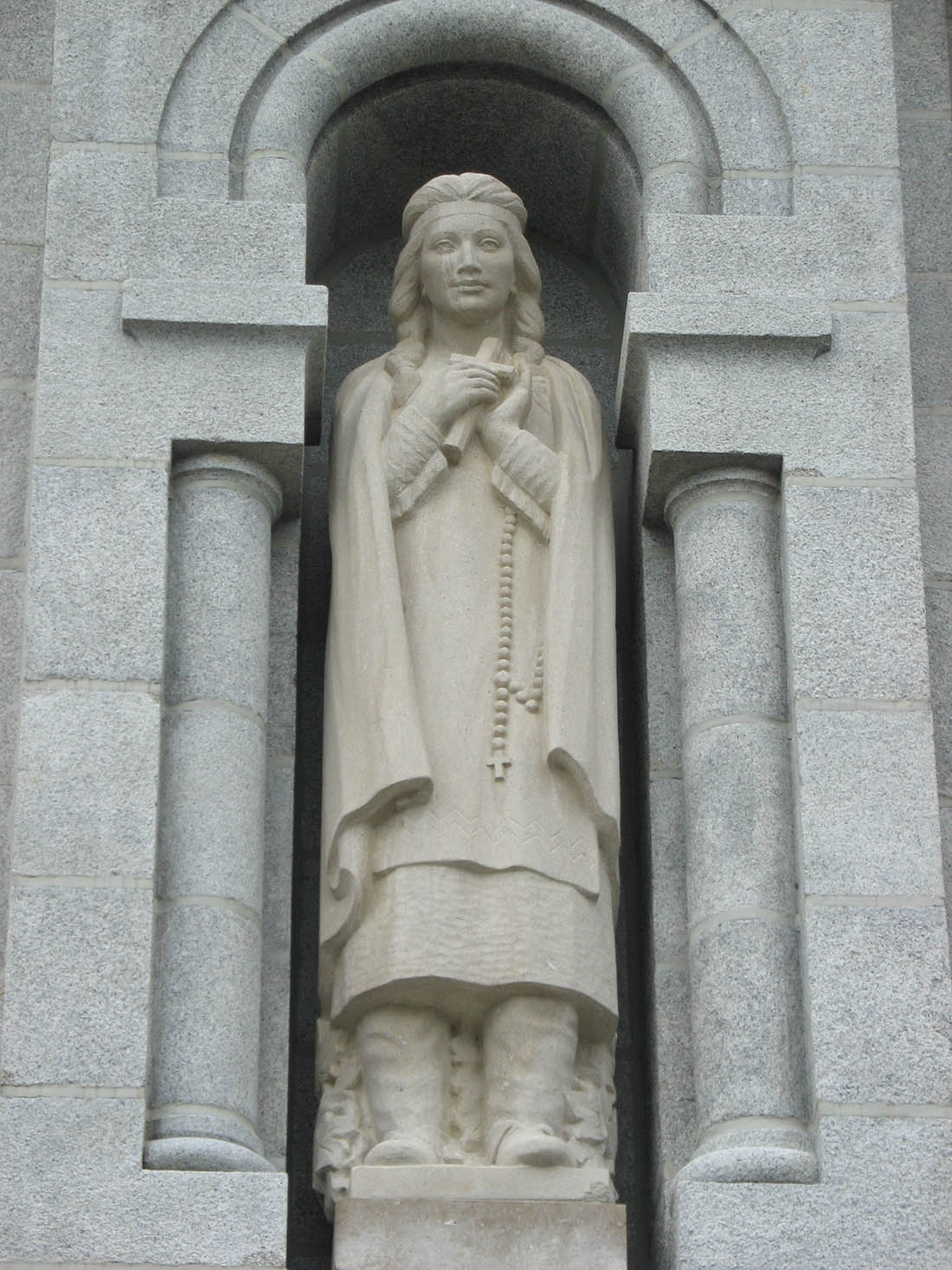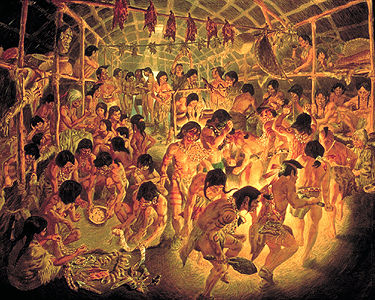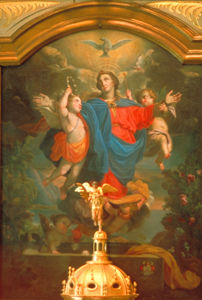Claude Chauchetière, Jesuit missionary, painter, biographer, teacher (born on 6 September 1645 in St-Porchaire-de-Poitiers, France; died 17 April 1709 in Quebec City). Chauchetière was a missionary among the Haudenosaunee in what is now Kahnawà:ke, Quebec. He painted a portrait of Kateri Tekakwitha and is considered one of the pioneer painters of New France. Chauchetière later taught mathematics in Montreal.

Claude Chauchetière was born in 1645 in France to attorney Jean Chauchetière and his wife, Élisabeth de La Noue. He became a Jesuit novice when he was 18 years old and studied philosophy as part of his education. In 1672, he was encouraged to become a missionary in Canada by François-Joseph Le Mercier. Before leaving France, Chauchetière studied the Wendat (Huron) language in preparation for this work (see also Indigenous Languages in Canada).
Chauchetière arrived in Canada in 1677 and went in 1678 to the Haudenosaunee (Iroquois) mission of St-François-Xavier at Sault-St-Louis [Kahnawà:ke, Quebec]. There he met Algonquin–Kanyen'kehà:ka (Mohawk) convert Kateri Tekakwitha, who lived at the mission from 1677 until her death on 17 April 1680.
Most of his time as a missionary was spent in this village of Haudenosaunee converts. His Narration annuelle de la Mission du Sault depuis la fondation jusqu'à l'an 1686 relates and illustrates the main events of his mission. The full-length portrait of Tekakwitha in the church at Kahnawà:ke is attributed to him, even though the chapel in the tableau appears more recent than any he could have known. The work may be an old copy of his painting. He also wrote a biography of Tekakwitha.
Chauchetière also painted biblical scenes and illustrations of Christian sacraments and the deadly sins. The paintings, which were intended for the residents of Kahnawà:ke, were bound into small books. A number of Jesuits used illustrations in their mission work, but the only authentic pieces to survive were the books by Chauchetière.
According to historian Cornelius J. Jaenen, Chauchetière’s career as a missionary ended in 1694. That year, Chauchetière became a teacher of mathematics in Montreal. He was also responsible for preaching sermons once a month and hearing confessions on Sundays. Chauchetière was also confessor to Governor Louis-Hector de Callière of Montreal.

 Share on Facebook
Share on Facebook Share on X
Share on X Share by Email
Share by Email Share on Google Classroom
Share on Google Classroom







